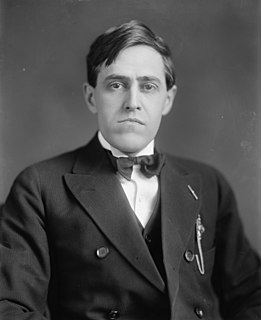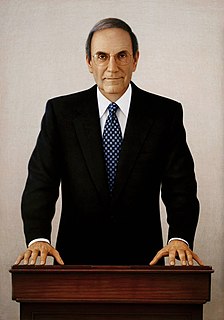| State | Incumbent | Results | Candidates |
|---|
| Senator | Party | Electoral history |
|---|
| Arizona | Henry F. Ashurst | Democratic | 1912 | Incumbent re-elected. | √ Henry F. Ashurst (Democratic), 55.36%
Joseph Henry Kibbey (Republican), 39.4%
W. S. Bradford (Socialist), 5.24% [4] |
| California | John D. Works | Republican | 1911 | Incumbent retired.
New senator elected. [5]
Republican hold. | √ Hiram Johnson (Republican), 61.09%
George S. Patton, Sr. (Democratic), 29.54%
Walter Thomas Mills (Socialist), 5.25%
Marshall Atwood (Prohibition), 4.12% |
| Connecticut | George P. McLean | Republican | 1911 | Incumbent re-elected. [6] | √ George P. McLean (Republican), 50.17%
Homer Stille Cummings (Democratic), 46.24%
Martin Plunkett (Socialist), 2.48%
Wilbur Manchester (Prohibition), 0.83%
Otto Ruckser (Socialist Labor), 0.29% |
| Delaware | Henry A. du Pont | Republican | 1906 (Special)
1911 | Incumbent lost re-election.
New senator elected. [7]
Democratic gain. | √ Josiah O. Wolcott (Democratic), 49.67%
Henry A. du Pont (Republican), 44.77%
Hiram A. Burton (Progressive), 4.61%
William C. Ferris (Socialist), 0.96% |
| Florida | Nathan P. Bryan | Democratic | 1911 (Appointed)
1911 (Special) | Incumbent lost renomination.
New senator elected. [8]
Democratic hold. | √ Park Trammell (Democratic), 82.86%
William O'Neal (Republican), 12.45%
R. L. Goodwin (Socialist), 4.69% |
| Indiana | John W. Kern | Democratic | 1911 | Incumbent lost re-election.
New senator elected. [9]
Republican gain. | √ Harry Stewart New (Republican), 47.77%
John W. Kern (Democratic), 46.14%
Joseph Zimmerman (Socialist), 3.06%
Elwood Haynes (Prohibition), 2.21%
John N. Dyer (Progressive), 0.61%
Ira Decker (Socialist Labor), 0.22% |
| Maine | Charles Fletcher Johnson | Democratic | 1910 | Incumbent lost re-election.
New senator elected September 11, 1916. [10]
Republican gain. | √ Frederick Hale (Republican), 52.72%
Charles Fletcher Johnson (Democratic), 46.09%
James F. Carey (Socialist), 1%
Arthur C. Jackson (Prohibition), 0.19% |
| Maryland | Blair Lee I | Democratic | 1913 (Special) | Incumbent lost renomination.
New senator elected. [11] [12]
Republican gain. | √ Joseph I. France (Republican), 49.32%
David John Lewis (Democratic), 47.62%
James Frizzell (Prohibition), 1.44%
Sylvester Young (Socialist), 1.12%
Frank Lang (Labor), 0.5% |
| Massachusetts | Henry Cabot Lodge | Republican | 1893
1899
1905
1911 | Incumbent re-elected. [13] | √ Henry Cabot Lodge (Republican), 51.68%
John F. Fitzgerald (Democratic), 45.31%
William N. McDonald (Socialist), 3.01% |
| Michigan | Charles E. Townsend | Republican | 1910 | Incumbent re-elected. [13] | √ Charles E. Townsend (Republican), 56.34%
Lawrence Price (Democratic), 39.85%
E. O. Foss (Socialist), 2.41%
John Y. Johnston (Prohibition), 1.17%
Herman Richter (Socialist Labor), 0.14% |
| Minnesota | Moses E. Clapp | Republican | 1901 (Special)
1905
1911 | Incumbent lost renomination.
New senator elected. [14] [15]
Republican hold. | √ Frank B. Kellogg (Republican), 48.58%
Daniel Lawler (Democratic), 30.84%
Willis Calderwood (Prohibition), 20.58% |
| Mississippi | John Sharp Williams | Democratic | 1908 (Early) | Incumbent re-elected. [16] | √ John Sharp Williams (Democratic), Unopposed |
| Missouri | James A. Reed | Democratic | 1910 | Incumbent re-elected. [17] | √ James A. Reed (Democratic), 50.56%
Walter S. Dickey (Republican), 47.44%
Kate Richards O'Hare (Socialist), 1.87%
Joseph Scheidler (Socialist Labor), 0.12% |
| Montana | Henry L. Myers | Democratic | 1911 | Incumbent re-elected. [18] | √ Henry L. Myers (Democratic), 51.06%
Charles Nelson Pray (Republican), 43.40%
Henry La Beau (Socialist), 5.54% |
| Nebraska | Gilbert Hitchcock | Democratic | 1911 | Incumbent re-elected. [19] | √ Gilbert Hitchcock (Democratic), 49.98%
John L. Kennedy (Republican), 45.88%
E. E. Olmstead (Socialist), 2.59%
D. B. Gilbert (Prohibition), 1.55% |
| Nevada | Key Pittman | Democratic | 1913 (Special) | Incumbent re-elected. [20] | √ Key Pittman (Democratic), 38.81%
Samuel Platt (Republican), 32.28%
Ashley G. Miller (Socialist), 28.91% |
| New Jersey | James Edgar Martine | Democratic | 1911 | Incumbent lost re-election.
New senator elected. [21]
Republican gain. | √ Joseph S. Frelinghuysen (Republican), 55.99%
James Edgar Martine (Democratic), 38.9%
William C. Doughty (Socialist), 3.06%
Livingston Barbour (Prohibition), 1.64%
Rudolph Katz (Socialist Labor), 0.42% |
| New Mexico | Thomas B. Catron | Republican | 1912 | Incumbent retired.
New senator elected. [22]
Democratic gain. | √ Andrieus A. Jones (Democratic), 51.01%
Frank Hubbell (Republican), 45.95%
W. P. Metcalf (Socialist), 3.04% |
| New York | James Aloysius O'Gorman | Democratic | 1911 | Incumbent retired.
New senator elected.
Republican gain. | √ William M. Calder (Republican), 54.32%
William F. McCombs (Democratic), 39.22%
Joseph D. Cannon (Socialist), 3.96%
D. Leigh Colvin (Prohibition), 1.25%
Bainbridge Colby (Progressive), 0.99%
August Gillhaus (Socialist Labor), 0.26% |
| North Dakota | Porter J. McCumber | Republican | 1911 | Incumbent re-elected. [23] | √ Porter J. McCumber (Republican), 53.85%
John Burke (Democratic), 38.24%
E. R. Fry (Socialist), 7.91% |
| Ohio | Atlee Pomerene | Democratic | 1911 | Incumbent re-elected. [24] | √ Atlee Pomerene (Democratic), 49.26%
Myron T. Herrick (Republican), 46.15%
Charles Ruthenberg (Socialist), 3.29%
Aaron S. Watkins (Prohibition), 1.04%
Jacob S. Coxey, Sr. (Independent), 0.26% |
| Pennsylvania | George T. Oliver | Republican | 1909 (Special)
1911 | Incumbent retired.
New senator elected. [25]
Republican hold. | √ Philander C. Knox (Republican), 56.31%
Ellis Orvis (Democratic), 37.25%
Charles Ervin (Socialist), 3.76%
Herbert T. Ames (Prohibition), 2.49%
Robert C. Macauley (Single Tax), 0.12% |
| Rhode Island | Henry F. Lippitt | Republican | 1910 | Incumbent lost re-election.
New senator elected. [26]
Democratic gain. | √ Peter G. Gerry (Democratic), 52.94%
Henry F. Lippitt (Republican), 44.12%
Frederick Hurst (Socialist), 2.25%
Frank J. Sibley (Prohibition), 0.51%
Peter McDermott (Socialist Labor), 0.19% |
| Tennessee | Luke Lea | Democratic | 1911 | Incumbent lost renomination.
New senator elected. [25]
Democratic hold. | √ Kenneth McKellar (Democratic), 54.42%
Ben W. Hooper (Republican), 44.75%
H. H. Mangum (Socialist), 0.83% |
| Texas | Charles Allen Culberson | Democratic | 1899
1905
1911 | Incumbent re-elected. [27] | √ Charles Allen Culberson (Democratic), 81.3%
Alex Atcheson (Republican), 13.09%
F. A. Hickey (Socialist), 4.99%
F. H. Combeau (Prohibition), 0.62% |
| Utah | George Sutherland | Republican | 1905
1911 | Incumbent lost re-election.
New senator elected. [28]
Democratic gain. | √ William H. King (Democratic), 56.92%
George Sutherland (Republican), 39.93%
Christian Poulson (Socialist), 3.16% |
| Vermont | Carroll S. Page | Republican | 1908 (Special)
1910 | Incumbent re-elected. [29] | √ Carroll S. Page (Republican), 74.41%
Oscar C. Miller (Democratic), 23.5%
Norman Greenslet (Socialist), 2.1% |
| Virginia | Claude A. Swanson | Democratic | 1910 (Appointed)
1911 (Appointed)
1912 (Special) | Incumbent re-elected. [30] | √ Claude A. Swanson (Democratic)
Unopposed |
| Washington | Miles Poindexter | Republican | 1910 | Incumbent re-elected. [31] | √ Miles Poindexter (Republican), 55.39%
George Turner (Democratic), 37.06%
Bruce Rogers (Socialist), 5.95%
Joseph Campbell (Prohibition), 1.21%
Walter J. Thompson (Progressive), 0.4% |
| West Virginia | William E. Chilton | Democratic | 1911 | Incumbent lost re-election.
New senator elected. [32]
Republican gain. | √ Howard Sutherland (Republican), 50.14%
William E. Chilton (Democratic), 48.17%
G. A. Gneiser (Socialist), 1.7% |
| Wisconsin | Robert M. La Follette, Sr. | Republican | 1905
1911 | Incumbent re-elected. [33] | √ Robert M. La Follette, Sr. (Republican), 59.23%
William F. Wolfe (Democratic), 31.9%
Richard Elsner (Socialist), 6.85%
Charles L. Hill (Prohibition), 2.02% |
| Wyoming | Clarence D. Clark | Republican | 1911 | Incumbent lost re-election.
New senator elected. [34]
Democratic gain. | √ John B. Kendrick (Democratic), 51.47%
Clarence D. Clark (Republican), 45.47%
Paul Paulsen (Socialist), 2.61%
Arthur B. Campbell (Prohibition), 0.45% |



























